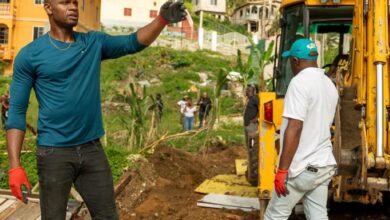Is killing environmentalists a sport in Latin America?
While the war to protect the environment continues, efforts to combat it keeps on taking lives
Each of the cases of murders of environmentalists in Latin America has two main points in common: the lack of media coverage of what is happening in general terms and the lack of interest from local media to make the work of environmentalists more visible. Latin America
Leer en español: ¿Asesinar ambientalistas es un deporte en América Latina?
In a report made in 2017 by Global Witness – NGO specialized in denouncing the relationship between corruption and the irresponsible consumption of natural resources – Latin America is cited as the region with the highest number of registered murders of people fighting to preserve natural areas, as well as they watch over the rights of the indigenous communities that live in culturally protected areas. Here we present some of the most alarming cases.
Among the most well-known and openly denounced cases is that of the Tarahumara environmental leader, Isidro Baldenegro. Native to the Sierra Madre Occidental; region that includes all the western part of Mexico and to the south includes part of the United States. As a descendant of the Tarahumara indigenous community, much of his life was dedicated to the denunciation and opposition of commercial projects in the region focused on the development of wood. One of the great enemies of the struggle was the direct connection between the companies and the main drug trafficking groups operating in the region. In 2003, he led a series of public demonstrations along with a group of wives of murdered activists, which led to the banning of logging in the region by court order.
For its part, in Colombia – cited as the second most dangerous country for environmentalists – another of the most notorious cases of the last two years occurred. Yolanda Maturana was a well-known environmental leader who openly denounced illegal mining as well as various projects that contaminated water in the areas known as Risaralda and Chocó. What is particularly alarming about the situation in Colombia is the low coverage of illegal mining and the activists who are dedicated to keeping natural resources intact. According to the complaint made by another environmental leader, Gladys Cifuentes, after Yolanda's murder, several indigenous groups have openly denounced the presence of armed groups that guard the aforementioned areas, as well as the region known as Pueblo Rico.
In Brazil, the picture is just as gloomy as in the rest of Latin America. In this country, much of the environmental struggle is aimed at protecting not only the land but also the native communities of the Amazon, which have been forced to move by the construction of hydroelectric dams.
The case of Nilce de Souza Magalhães, is undoubtedly the most widespread by the local media and some of the main media in Latin America. Much of his life and career as an activist was linked to the struggle against the construction of dams in the Porto Velho region located near the Madeira River – the Amazon River. According to the investigations, prior to her death, Nilce was reported missing on January 7, 2016 and it was not until June of the same year that her body was found dead near the Jirau hydroelectric dam.
Another factor that makes the situation in Brazil even more critical is the evident institutional weakening decreed by its current president Michel Temer, who after having occupied the post decreed the dismantling of the Ministry of Human Rights.
Finally, in Honduras, one of the most alarming cases is that of Berta Cáceres, who was murdered in 2016. The causes for which Cáceres was fighting were linked to the dignified treatment of the indigenous communities – specifically the Lenca community – who have been affected by the construction of the Agua Zarca hydroelectric project. The alarming aspect of this project is the fact that for its development it is necessary to invade more than one area within the region. Therefore, displacement of communities is imminent. As in the case of Nilce in Brazil, the murder of Cáceres stems from the political changes that have taken place within the country. Sources estimate that the Agua Zarca project was approved in 2009 during the de facto government following the coup d'état that same year. As a result of these changes in the government, the famous General Water Law was approved, granting concessions for the construction of various water projects, while repealing various constitutional decrees that prohibited the construction of dams in protected areas.
The fight for the environment, not only focuses on demonstrating against the excessive exploitation of natural resources or the protection of animal species in danger of extinction. Also, it is inclusive of the indigenous communities who have protected the flora and fauna of their region and that today are affected by the growing number of projects – mostly hydroelectric and mining – that are being approved in the main Latin American countries. . Region in which every day that passes there is a new reason to violate human rights as well as the integrity of its inhabitants.
Latin American Post | María Fernanda Velasco
Translated by "¿Asesinar ambientalistas es un deporte en América Latina?"






